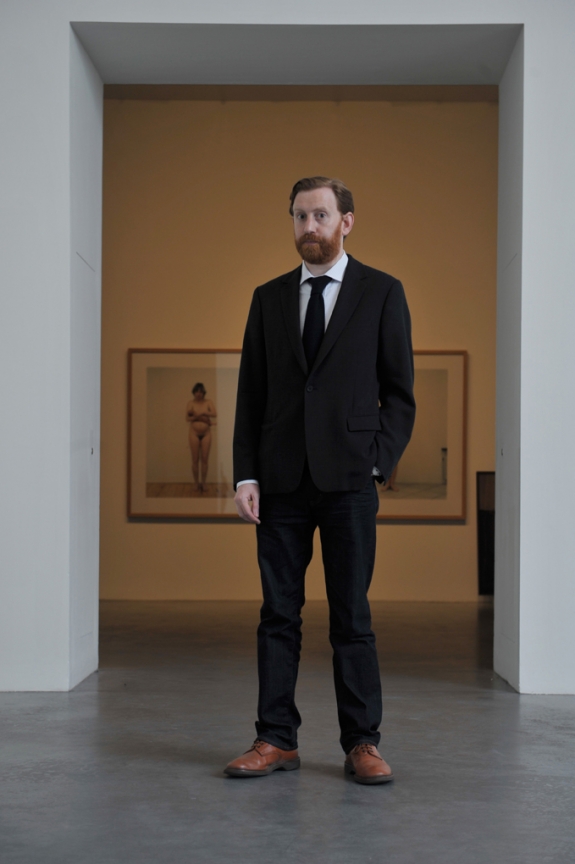Having largely ignored photography in the past, the Tate is making up
time with a series of exhibitions and an important new acquisitions fund.
BJP meets its first-ever curator of photography, Simon Baker,
to get the lowdown on its plans to strengthen its support for the medium.
The Tate was a late developer when it came to photography, staging its first major exhibition, Cruel and Tender, in 2003, decades after similar public-funded modern art galleries had done so on the Continent and in North America. And what little photography it had in its collection was predictably focused on the Becher School (as these were the first photographers to really break into the contemporary art market), along with a few prints donated by well-wishers.
But all that’s changed in the past couple of years, particularly since it appointed its first full-time photography curator. Simon Baker has been in the job for nearly 18 months, and this month Tate Modern will open four simultaneous photography exhibitions; one on each of its gallery floors. The shows include two exhibitions devoted to new work by Simon Norfolk and Taryn Simon, plus three artists’ rooms devoted to Diane Arbus, and a five-room show of recently acquired work called New Documentary Forms, which features recent projects by Luc Delahaye, Mitch Epstein, Guy Tillim and Akram Zaatari, and two series by Boris Mikhailov.
What’s more, the institution set up a photography acquisitions committee last May, which, according to one well-placed source, has an annual budget of around £200,000 to add to Tate’s photography collection (Baker says the figure isn’t correct, but hints it’s not far off, though he won’t be drawn on the exact figure). To put that into perspective, the V&A and the National Medium Museum are thought to have around 5-10 percent of that figure to spend each year, so Tate’s new fund represents a very significant investment. And that’s in addition to the purchases Tate’s regional acquisitions committees make. So while the exhibition and acquisition plans don’t always work in tandem (Tate Modern’s last big show, Exposed, was a travelling exhibition that had previously been in San Francisco), there is inevitably a symbiotic relationship between the two.
The Diane Arbus exhibition will show off 40 of the 69 Arbus prints donated to Tate and National Galleries of Scotland by London dealer Anthony d’Offay in 2008, for example, while The Wilson Center (BJP #7781) has loaned a five-room premiere of Taryn Simon’s new project, A Living Man Declared Dead and Other Chapters, and has promised to donate the prints in the near future. New Documentary Forms consists almost entirely of new acquisitions, including Mikhailov’s Red and 13 images from the At Dusk series. In all cases, Tate has worked closely with the photographer or the photographer’s estate, working out what to acquire and how the prints will be displayed.
“We have to balance the resources we can fundraise for and the money we’re able to spend with people thinking, ‘OK, if I’ve got an amazing collection of photography, Tate is the right place for it’,” says Baker. “They won’t think that unless we show it really well. Part of the obligation on me is to make sure we’re showing things in ways photographers are happy with, so they really want their work to be shown here. The Pompidou [in Paris] only started its [photography] collection 30 years ago, and they now have 25,000 prints, including one of the biggest collections of Brassai in the world. They have many amazing gifts because whenever someone gives them a gift, they make a beautiful display – show it really sensitively and make amazing supporting material and publications. Our hope is if we pay photographers the respect they deserve and show their work brilliantly, they will want to be in the collection.”
Artist collaborations
Tate curators worked closely with Bruce Davidson last year on an exhibition of his Subway series, for example – prints that have been promised to the museum by collectors Jane and Michael Wilson. Using all the images from the book of the same name, in the order they appear in it, the prints were arranged as a single continuous strip in the middle of the gallery walls, just as the photographer suggested. Baker is working directly with Mikhailov on the installation of his room too, following the photographer’s directions on how to show his Red project and pairing it with the At Dusk series at his request.
Next year Baker is working on his first large-scale curated show for Tate Modern, a mouthwatering exhibition pairing William Klein with Daido Moriyama, and Tate has acquired a substantial body of work by the Japanese photographer in preparation. “With post-war work, it’s not so difficult – many of the artists are still alive, and often they have held onto things that they would love to end up in Tate,” he says. “When we talk with Lewis Baltz about what we might be able to acquire from him, for example, it becomes an interesting discussion about what can we afford and how we can make it work financially.”
Tate is also collaborating with younger image-makers such as Simon, Tillim and Delahaye, buying contemporary work sometimes well ahead of the loop. The institution acquired Epstein’s 2008 American Power series before it won the Prix Pictet, for example. Chief curator at Tate, Sheena Wagstaff, is collaborating with Simon Norfolk on his current project, which pairs John Burke’s images of the British military in 19th-century Afghanistan with their modern-day equivalents. The project isn’t a Tate commission, but Wagstaff has worked with Norfolk throughout its production, and even went to Afghanistan with him. “It shows the great strength of the curatorial team here,” says Baker. “The curators are always researching, always exploring, always trying to find new approaches.”



